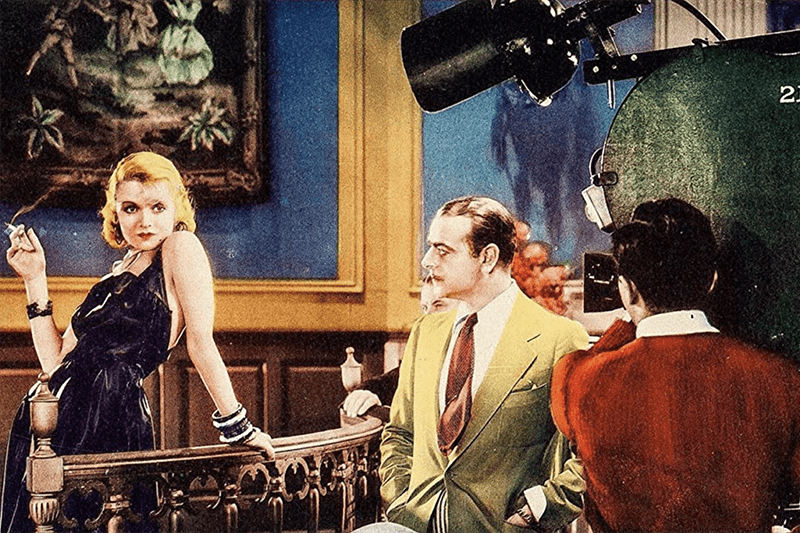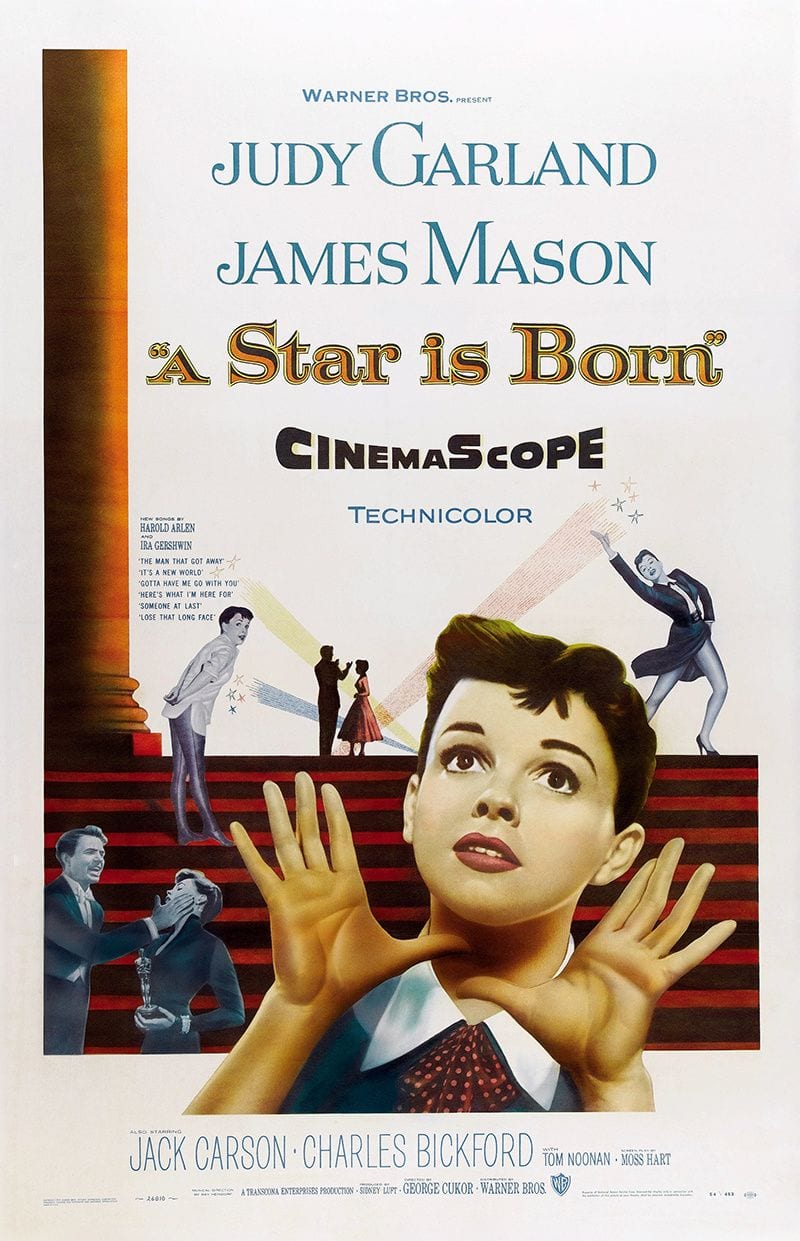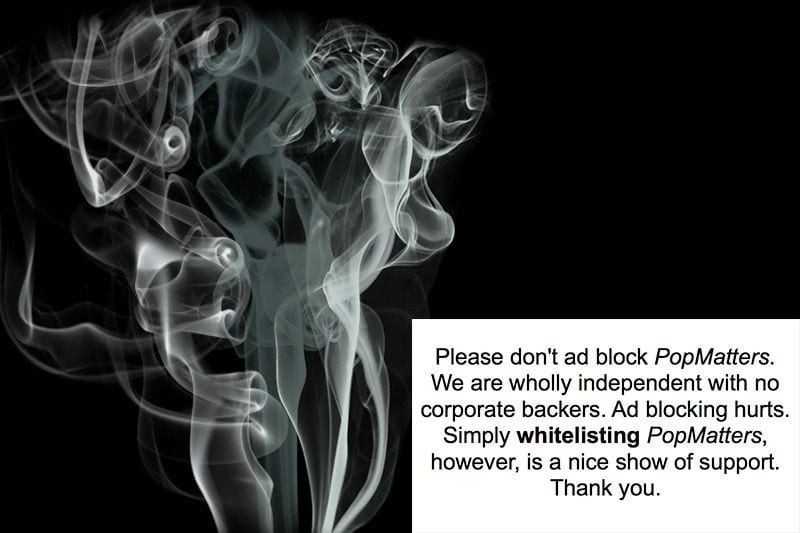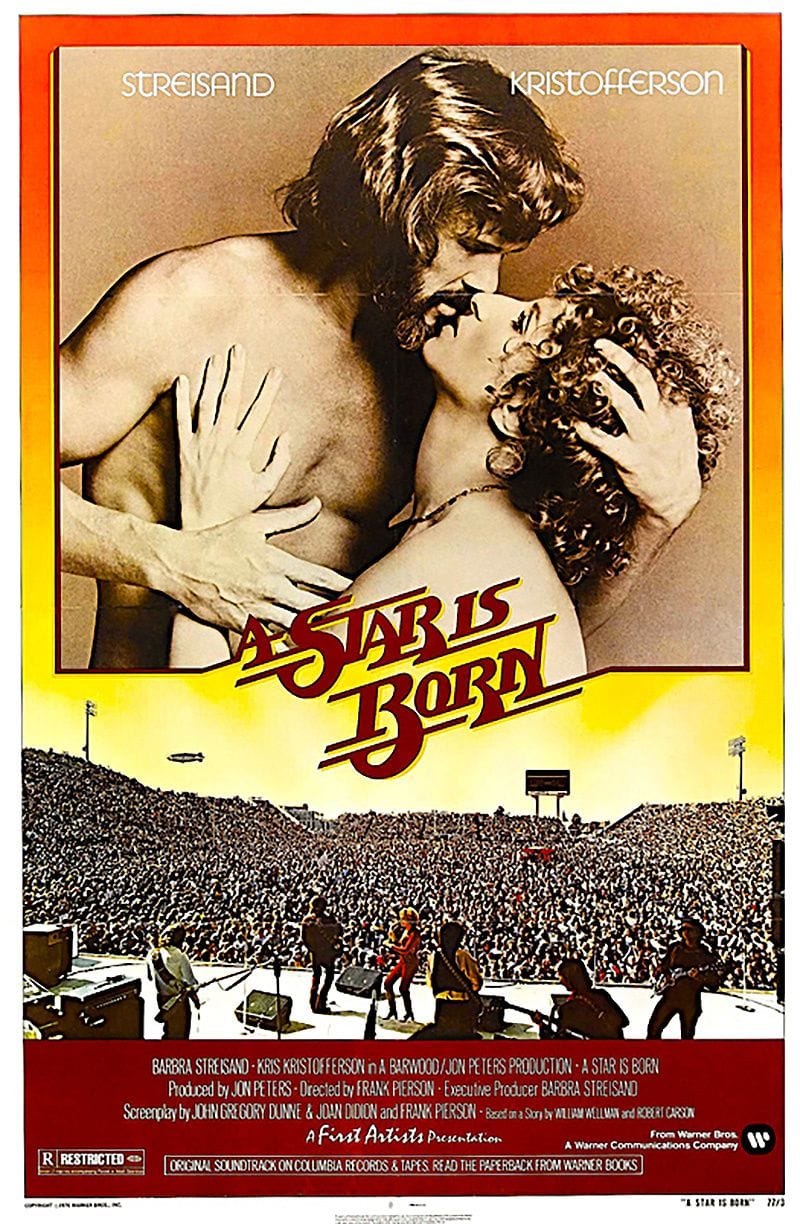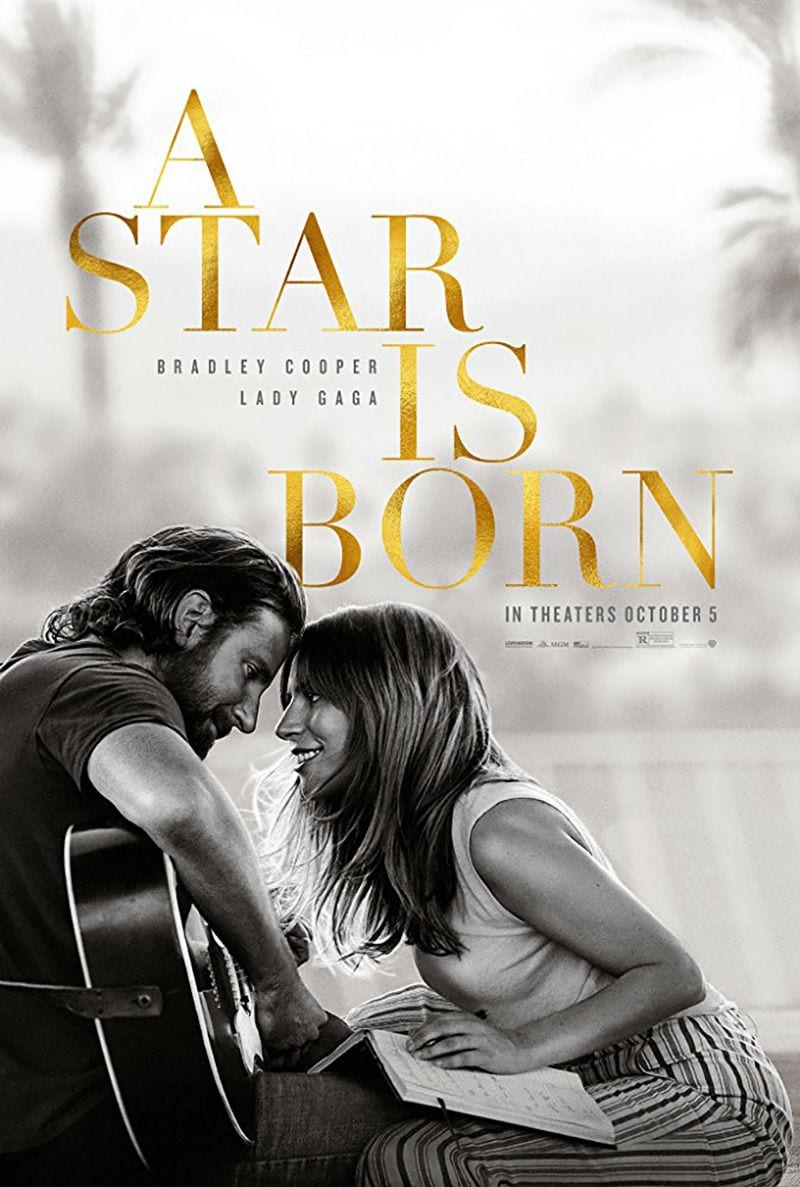When Bradley Cooper’s A Star is Born hits US theaters October 5th, it won’t be a question of will the film be a big hit, but rather how big. As of this writing, Forbes is forecasting an opening weekend box office of anywhere from $30-50 million, making the film a contender for a spot in the top-10 all-time October openers. Some critics have been downright rapturous in their praise since its premiere at the Venice Film Festival and the word “Oscar” has been heard mentioned more than once. (PopMatters‘ film critic J.R. Kinnard, however, is not so enchanted.) Indeed, Director and star Bradley Cooper and Lady Gaga look set to dominate the 2019 awards season.
There are now four
A Star is Born films. Spanning eight decades, all bear the same title and storyline: an unknown woman meets a male star, they fall in love, her career soars, his fades into oblivion.
The story keeps coming back because the formula works. Thus far, the films have garnered two Oscars, 18 Oscar nominations, and have earned almost $100 million at the box office—a number that will soon skyrocket if
Forbes’ forecast proves true. A Star Is Born has grown into a fascinating, quasi-franchise. It’s Hollywood’s most enduring saga with a history as dramatic as the films themselves.
Warner Bros has owned the
A Star is Born story rights since 1954 (Bradley Cooper’s 2018 movie is the studio’s third version), but it actually started off as an independent film. Produced by David O. Selznick and directed by William Wellman, the original A Star is Born (1937) stars Janet Gaynor as a small-town woman trying to break into Hollywood and Fredric March (in an astonishing performance), as an alcoholic matinee idol on the decline. It is perhaps the most nuanced of the Star is Born series; certainly the most poetic. Even its three-strip Technicolor is delicate; dreamlike. Critics gushed over it (“Star is Born shows Hollywood as Hollywood is,” wrote Louella Parsons) and the Academy nominated it for seven Oscars.
Selznick, a man never to shy away from self-congratulations, said:
”
A Star is Born was really a concept of my own to tell the story of a rising star and a falling star and to try to disprove what I had long believed had been a tradition until this time, that pictures about Hollywood could not succeed.”
This is a half-truth, something Selznick seems to realize quickly as his next words are:
“Although, I made a fairly successful one at RKO called
What Price Hollywood?”
What Price Hollywood? (1932) was a Selznick passion project. He’d recently taken over as head of production at RKO following a meteoric rise to prominence—from story editor to production head in just five years. Selznick was itching to make a film showing what life in Hollywood was really like; an exposé on the ugly underbelly of celebrity.
Even then, when Tinseltown was still young, a black rot had set in on its soul. Already, reputations had been destroyed (pioneering actress/ director/ producer Mabel Normand), careers ended (comedy genius Roscoe Arbuckle), and lives taken (prolific director William Desmond Taylor). And just three months after What Price Hollywood? was released, actress Peg Entwistle, who’d recently appeared in Selznick’s own RKO picture Thirteen Ladies, committed suicide by throwing herself from the Hollywood sign.
One movie star in particular who suffered the effects of Hollywood’s dark side was Clara Bow. The original ‘It Girl’ had been driven to exhaustion. Following a press frenzy of salacious headlines surrounding her private life, she bowed out of her Paramount contract. Selznick, a prescient being if ever there was one, tapped into this and wanted Bow to star in his new project:
“Suggest sensational comeback for Clara Bow in a Hollywood picture titled “The Truth About Hollywood.” … Feel very strongly any objections to Hollywood story as such have no basis whatever.” – Memo from David O. Selznick, 1932
The working title mentioned in Selznick’s memo, The Truth About Hollywood, was a story by the famous writer Adela Rogers St. Johns—then known as the “World’s Greatest Girl Reporter”. As a Los Angeles native who had been reporting on the industry since the late 1910s, St. Johns knew a thing or two about Hollywood and its denizens. She based the story on the real-life relationship of silent film superstar Colleen Moore and her husband/producer, John McCormick, an alcoholic.
Selznick was right about the story, but wrong about Bow, who was in no condition to work. Instead, Selznick cast Constance Bennett: a dazzling, popular contract player who had just arrived at RKO from Warner Bros.
Bennett acts her heart out as Mary Evans, the hopeful young actress determined to conquer Hollywood. She (sort of) manages to pay rent by working as a waitress at Hollywood’s premiere hangout, The Brown Derby, hoping for opportunity to knock. When the biggest director in town, Max Carey (played by Lowell Sherman) walks in, she leaps at the chance.
Max Carey: “What’s a pretty girl like you doing around here?”
Mary Evans: “Waiting for a big director like you.”
Won over by her authenticity (he, too, can spot a phony a mile away), Sherman grants her a screen test which she proceeds to thoroughly bomb. But Bennett works hard at acting and slowly inches her way up the ladder with plenty of help from the Hollywood dream factory. Unlike the female leads in the subsequent A Star Is Born films, Bennett’s character isn’t especially talented. She’s not Judy Garland singing “The Man Who Got Away”, or Barbra Streisand singing “Evergreen”. She’s just a working actress the studio knows how to package properly and market smartly.
Yet as she ascends to superstardom, Sherman spirals into self-destruction. His alcoholism, already a problem, has by then sent his career into a freefall. Billy Wilder’s The Lost Weekend (1945) is commonly thought to be the first film to seriously tackle alcoholism, but Sherman’s performance here deserves attention. Perhaps it’s due to Sherman’s personal struggle, as well as that of his dear friend and brother-in-law John Barrymore, that make his performance so authentic, but regardless: in 1932 this was something new. On film, alcoholics were treated as comic relief—a funny drunk stumbling in and out of the frame. In What Price Hollywood?, Sherman’s illness is real and not a laughing matter. By the time Bennett wins the Oscar, her former benefactor and friend is a shell of a man and — on the night of her Oscar win — takes his life.
It’s one of the most shocking moments in the A Star is Born canon. Not only is What Price Hollywood? a pre-code, giving it an edginess lacking in the 1937 and 1954 remakes, but the film is not a romance. There’s no sentimentality here. Sherman’s suicide is sudden. Brutal. Final.
Selznick had recruited a new kid to the RKO lot, George Cukor, to direct the picture. The two men had bonded during their time at Paramount, and Cukor was desperate for a hit movie. The result is a tight 88 minutes that was the most honest depiction of the Hollywood machine yet put to film. What Price Hollywood? was something the industry had never seen: its true self standing naked in the mirror. Although the film wasn’t a box office smash (it actually lost money for RKO), it was still a solid success with the critics, allowing Cukor to finally establish himself as a serious, sophisticated director. It also didn’t hurt Constance Bennett’s career—she’s never been better or brighter—and even Rogers St. Johns received an Oscar nomination for Best Story.
Five years later, as an independent producer, Selznick envisioned a bigger, bolder (Technicolor!) take on What Price Hollywood?, so he naturally approached Cukor to direct A Star is Born. Cukor declined. RKO was none too pleased with Selznick’s project, which it rightfully considered a direct rip-off. A plagiarism suite against Selznick was being considered and Cukor, cautiously, stayed away.
But Cukor did return to the story, 15 years later. This time for the chance to work with Judy Garland on a musical remake—a production that was Garland’s own passion project.
“For years I’d wanted to do A Star is Born,” Garland said. “When I suggested it to [MGM] while I was under contract there, they laughed at me.” But by the time the story rights became available in the early ’50s, Garland had been fired from MGM and was in desperate need of a comeback. She knew this was her big chance. Her then-husband, producer Sid Luft, began negotiations to secure the rights and struck a multi-picture deal with Warner Bros. Thus, What Price Hollywood was, eventually, re-born as the epic, musical extravaganza, A Star Is Born.
It was a tour-de-force for Garland. But as triumphant as she was, Warner Bros shattered any hope of the film becoming the hit Garland needed by slicing and dicing the final cut for wide release. The studio didn’t promote it well, either, and thus the box office returns were disappointing, and the film was shut out by the Academy come Oscar night. (In one of the biggest upsets in Academy history, Garland lost to Grace Kelly in George Seaton’s The Country Girl.) She never recovered from the blow, and neither did her film career.
Considering the drama surrounding the picture, it’s hardly surprising that 20 years passed before Warner Bros gave A Star Is Born another shot. In 1976, writer-director Frank Pierson (Cool Hand Luke; Dog Day Afternoon) gave it a facelift by moving the characters out of Hollywood and into the music business, this time with Barbra Streisand and Kris Kristofferson. Unfortunately, a power struggle ensued between Pierson, Streisand, and Peters. The film suffers for it and unlike its predecessors, Pierson’s A Star Is Born was roundly panned by the critics.
There are, of course, myriad other films that have riffed off the Star is Born story over the years, from The Bodyguard (1992) to The Artist (2011)—even La La Land (2016). All united by the same theme: at what price, fame?
Epilogue
In What Price Hollywood?, moments before taking his life, the doomed director calls on his friend, the star he created, to tell her: “I just wanted to hear your voice again.”
In the A Star is Born films, it goes along the lines of “Mind if I take just one more look?”
Eight decades on, we’re still looking.
*
What Price Hollywood? is available for streaming at FilmStruck and on DVD from the Warner Archive Collection. Bradley Cooper’s A Star is Born opens nationwide in the US on 5 October.
*
Sources Cited
Starr, Kevin. Material Dreams: Southern California through the 1920s. Oxford University Press, 1990.
Selznick, David O. (Author), Behlmer, Rudy (Editor). Memos of David O. Selznick. Modern Library, 2000.
Stenn, David. Clara Bow: Runnin’ Wild. Cooper Square Press, 2000.Brook, Vincent. Land of Smoke and Mirrors. Rutgers University Press, 2013.
Schmidt, Randy. Judy Garland on Judy Garland: Interviews and Encounters. Chicago Review Press, 2014.
Luft, Lorna Vance, Jeffrey. A Star Is Born: Judy Garland and the Film that Got Away. Running Press Adult, 2018.

